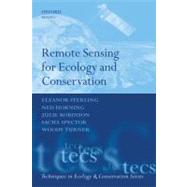
| Preface | |
| Acronyms List | |
| Introduction: Why Ecologists and Conservation Biologists Use Remote Sensing | |
| When to Use Remote Sensing | |
| Working with Images | |
| Measuring and Monitoring Land Cover, Land Use, and Vegetation Characteristics | |
| Terrain and Soils | |
| Marine and Coastal Environments | |
| Wetlands-Estuaries, Inland Wetlands, and Freshwater Lakes | |
| Atmosphere and Climate | |
| Disturbances: Fires and Floods | |
| Landscape Fragmentation | |
| Human Interfaces and Urban Change | |
| Protected Area Design and Monitoring | |
| Integrating Field Data | |
| Linking Remote Sensing with Modeling | |
| Global Conservation | |
| The Electromagnetic Spectrum | |
| Image Processing Software | |
| Open Source Software | |
| Satellites and Sensors | |
| Visual Interpretation | |
| Systems for Observing Climate and Atmospheric Phenomena | |
| References | |
| Index | |
| Table of Contents provided by Publisher. All Rights Reserved. |
The New copy of this book will include any supplemental materials advertised. Please check the title of the book to determine if it should include any access cards, study guides, lab manuals, CDs, etc.
The Used, Rental and eBook copies of this book are not guaranteed to include any supplemental materials. Typically, only the book itself is included. This is true even if the title states it includes any access cards, study guides, lab manuals, CDs, etc.